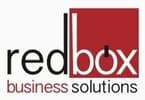When to Repair or Upgrade IT Hardware: A Practical Guide for Contra Costa County Businesses
Avoid costly hardware mistakes by using systematic evaluation methods that determine when repairs make sense versus when upgrades protect your investment.
Share:

Summary:
Financial Analysis Framework for Hardware Investment Decisions
Smart hardware decisions require systematic financial analysis that compares total cost of ownership between repair and replacement options while considering business risk factors and performance requirements. Calculate cumulative repair costs over the past 24 months, including parts, labor, and productivity losses during downtime periods to establish baseline maintenance expense patterns. Evaluate equipment age against manufacturer support timelines, warranty coverage, and parts availability that affect future repair feasibility and cost predictability. Compare current performance metrics against business requirements for processing speed, storage capacity, and reliability standards that determine adequacy for operational needs. Assess security vulnerability exposure in older hardware that lacks current protection capabilities, creating compliance risks and potential breach liability. Factor productivity impact costs when equipment operates below optimal performance levels, calculating revenue loss from delayed processing, frustrated users, and workflow disruptions. Consider opportunity costs of delaying upgrades that could provide competitive advantages through improved capabilities, automation features, or integration options. Red Box Business Solutions provides comprehensive cost-benefit analysis services that evaluate all financial factors affecting hardware decisions for Contra Costa County businesses.
Strategic Timing Considerations for Hardware Investments
Timing hardware investments strategically maximizes budget efficiency while avoiding emergency procurement situations that force suboptimal purchasing decisions. Monitor technology refresh cycles, vendor pricing patterns, and new product release schedules that create optimal purchasing windows with maximum value propositions. Plan replacement schedules that coordinate with business cash flow cycles, tax advantages, and operational demands to minimize disruption while maximizing financial benefits. Evaluate leasing versus purchase options that provide flexibility and predictable costs while maintaining access to current technology without large capital expenditures.
Professional Assessment Services for Objective Decision Making
Timing hardware investments strategically maximizes budget efficiency while avoiding emergency procurement situations that force suboptimal purchasing decisions. Monitor technology refresh cycles, vendor pricing patterns, and new product release schedules that create optimal purchasing windows with maximum value propositions. Plan replacement schedules that coordinate with business cash flow cycles, tax advantages, and operational demands to minimize disruption while maximizing financial benefits. Evaluate leasing versus purchase options that provide flexibility and predictable costs while maintaining access to current technology without large capital expenditures.
Risk Assessment and Business Continuity Planning
Hardware reliability directly impacts business continuity, making risk assessment critical for decisions that affect operational stability and customer service delivery. Evaluate failure probability based on equipment age, usage patterns, and maintenance history that predict likelihood of unexpected downtime during critical business periods. Assess backup system adequacy and data recovery capabilities that determine business survival potential when primary hardware fails catastrophically. Consider vendor support availability, response times, and expertise levels that affect problem resolution speed during equipment failures. Document business impact scenarios for different failure types, calculating revenue loss, customer satisfaction damage, and competitive disadvantage costs that result from extended downtime periods. Analyze dependency relationships between different hardware components that could create cascade failures affecting multiple business functions simultaneously. Evaluate insurance coverage for equipment failure impacts, business interruption claims, and liability protection that affect total risk exposure. Plan contingency procedures for emergency hardware acquisition, temporary system deployment, and alternative operation methods that maintain business functions during extended repair or replacement periods throughout Contra Costa County’s diverse business environment.
Cloud Migration as Hardware Alternative Strategy
Cloud migration offers strategic alternatives to traditional hardware refresh cycles by shifting infrastructure responsibility to service providers while maintaining performance and reliability standards. Evaluate workload characteristics, data requirements, and integration needs that determine cloud suitability for specific business applications. Compare cloud service costs against hardware purchase, maintenance, and replacement expenses over 3-5 year periods to establish true cost comparisons. Assess security, compliance, and control requirements that influence cloud versus on-premises decision criteria for different business functions and data types.
Modern cybersecurity requirements significantly influence hardware lifecycle decisions as older equipment often lacks protection capabilities needed for current threat environments. Evaluate hardware security features, encryption capabilities, and authentication support that determine vulnerability exposure in evolving threat landscapes. Assess firmware update availability, vendor security response times, and patch management capabilities that affect long-term protection adequacy. Consider compliance requirements, audit findings, and regulatory changes that mandate specific security capabilities only available in newer hardware generations.
Modern cybersecurity requirements significantly influence hardware lifecycle decisions as older equipment often lacks protection capabilities needed for current threat environments. Evaluate hardware security features, encryption capabilities, and authentication support that determine vulnerability exposure in evolving threat landscapes. Assess firmware update availability, vendor security response times, and patch management capabilities that affect long-term protection adequacy. Consider compliance requirements, audit findings, and regulatory changes that mandate specific security capabilities only available in newer hardware generations.
Optimizing Hardware Investment Through Strategic Decision Making
Strategic hardware decision-making prevents costly mistakes while maximizing technology investment value through systematic evaluation of financial, operational, and risk factors. Understanding cost analysis, timing optimization, and risk assessment creates decision frameworks that support business objectives while maintaining operational reliability. Whether managing simple equipment refresh needs or complex infrastructure transitions, proven evaluation methods prevent expensive errors while ensuring technology adequately supports business growth. Contact Red Box Business Solutions to discover how professional hardware assessment and strategic planning can optimize your Contra Costa County technology investments through decisions that balance cost, performance, and business risk management.
Article details:
- Published by:
- Red Box Business Solution
- Published to:
- Last modified:
- June 13, 2025
Share:
Continue learning:



